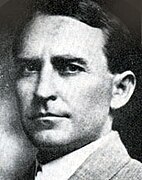| |||||||||||||||||||||||||||||||||||||||||||||||||||||||||||||||||||||||||||||||||
All 435 seats in the United States House of Representatives 218 seats needed for a majority | |||||||||||||||||||||||||||||||||||||||||||||||||||||||||||||||||||||||||||||||||
|---|---|---|---|---|---|---|---|---|---|---|---|---|---|---|---|---|---|---|---|---|---|---|---|---|---|---|---|---|---|---|---|---|---|---|---|---|---|---|---|---|---|---|---|---|---|---|---|---|---|---|---|---|---|---|---|---|---|---|---|---|---|---|---|---|---|---|---|---|---|---|---|---|---|---|---|---|---|---|---|---|---|
| |||||||||||||||||||||||||||||||||||||||||||||||||||||||||||||||||||||||||||||||||
 | |||||||||||||||||||||||||||||||||||||||||||||||||||||||||||||||||||||||||||||||||
| |||||||||||||||||||||||||||||||||||||||||||||||||||||||||||||||||||||||||||||||||
The 1938 United States House of Representatives elections was an election for the United States House of Representatives were elections for the United States House of Representatives to elect members to serve in the 76th United States Congress. They were held for the most part on November 8, 1938, while Maine held theirs on September 12. They occurred in the middle of President Franklin D. Roosevelt's second term. Roosevelt's Democratic Party lost a net of 72 seats to the Republican Party, who also picked up seats from minor Progressive and Farmer–Labor Parties.
Multiple factors contributed to the Democratic decline. One main reason was the Recession of 1937. Unemployment soared, undercutting the Democrats' claim that the New Deal had ended the Great Depression. Democrats fought among themselves, especially over Roosevelt's "Court Packing" plan. In addition, there was backlash against Roosevelt's intervention in the Democratic primaries which angered conservative Democrats.[1] The labor unions, which were emerging as a powerful grassroots factor in the New Deal Coalition, split bitterly as the American Federation of Labor and Congress of Industrial Organizations fought over membership.
Internal Democratic strains were exacerbated by an effort led by Roosevelt to purge certain conservative senators for defeat in Democratic primaries, including Walter George of Georgia, Millard Tydings of Maryland and Ellison Smith of South Carolina, along with the chairman of the House Rules Committee, John J. O'Connor of New York. All but the last were re-elected.[2]
While a number of New Deal supporters won primary elections, such as Sen. Alben Barkley in Kentucky, who defeated Happy Chandler, in Idaho, Sen. James P. Pope, a prominent New Deal supporter, lost his bid for re-nomination, as did California senator William McAdoo. The many seats Democrats won in traditionally Republican districts in the 1930, 1932, 1934 and 1936 elections meant that they had to defend a large number of marginal seats.
Meanwhile, the Republicans were united; they had shed their weakest members in a series of defeats since 1930.[3] Re-energized Republicans focused attention on strong fresh candidates in major states, especially Robert A. Taft, the conservative from Ohio,[4] Earl Warren (future Chief Justice), the moderate who won both the Republican and the Democratic primaries in California,[5] and Thomas Dewey, the crusading prosecutor from New York.[6] The Republican resurgence in 1938 was made possible by carrying 50% of the vote outside the South, giving GOP leaders confidence it had a strong base for the 1940 presidential election.[7]
Cite error: There are <ref group=lower-alpha> tags or {{efn}} templates on this page, but the references will not show without a {{reflist|group=lower-alpha}} template or {{notelist}} template (see the help page).
- ^ 1939 Britannica Book of the Year, "Democratic Party". pp. 205–206.
- ^ Price, p. 660-670.
- ^ Dunn.
- ^ Patterson, James T. (1972). Mr. Republican: A Biography of Robert A. Taft. pp. 160–182.
- ^ R. Jeffrey Lustig (2010). Remaking California: Reclaiming the Public Good. Heyday. p. 88. ISBN 9781597141345.
- ^ Smith, Richard Norton (1982). Thomas E. Dewey and His Times. pp. 273–281.
- ^ Robert Mason (2011). The Republican Party and American Politics from Hoover to Reagan. Cambridge UP. pp. 76–77. ISBN 9781139499378.
© MMXXIII Rich X Search. We shall prevail. All rights reserved. Rich X Search


